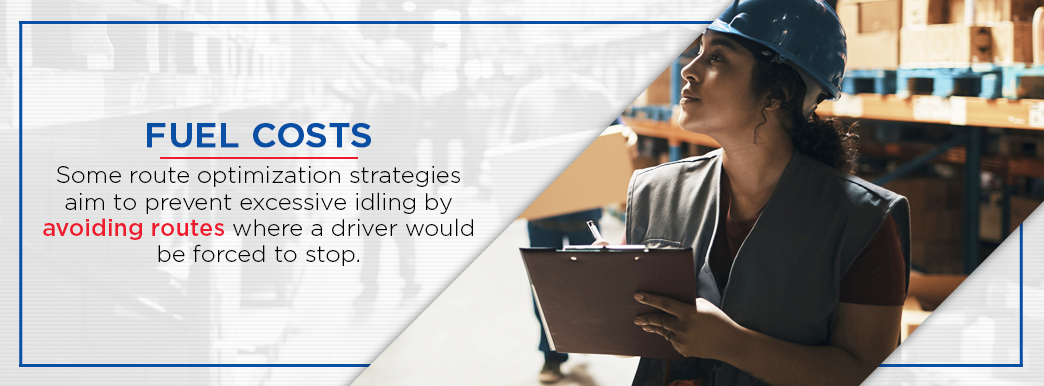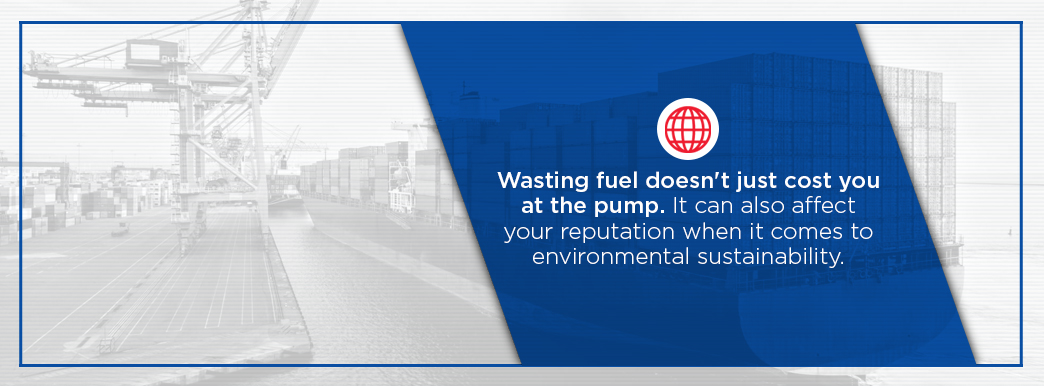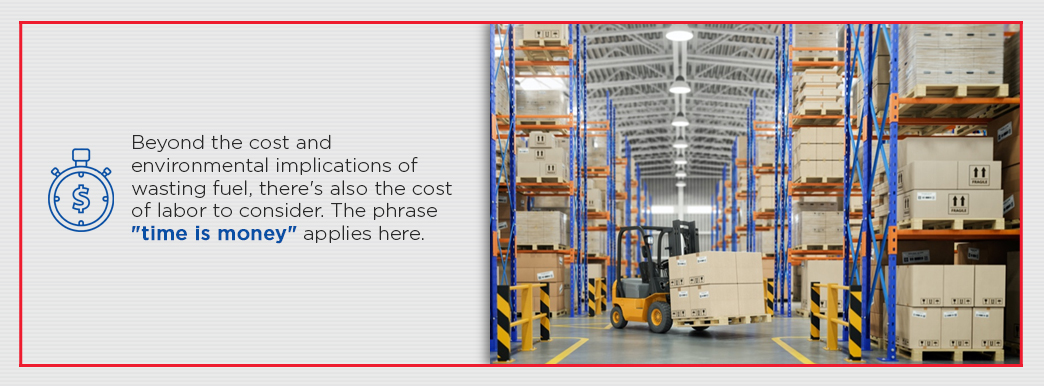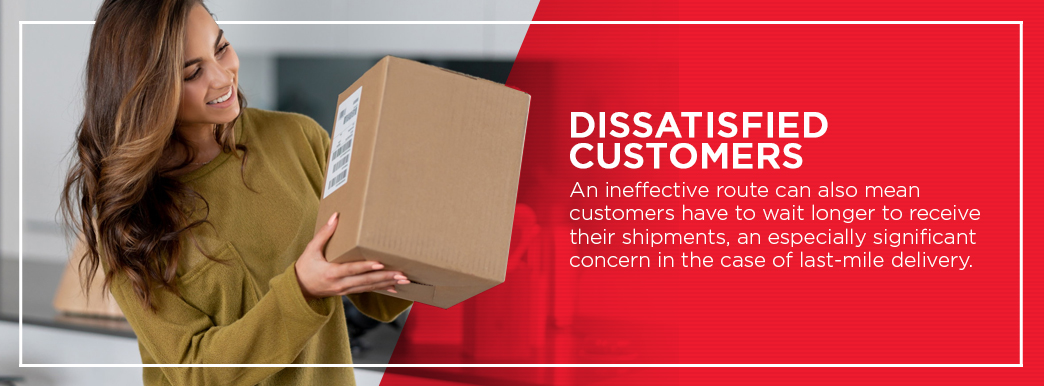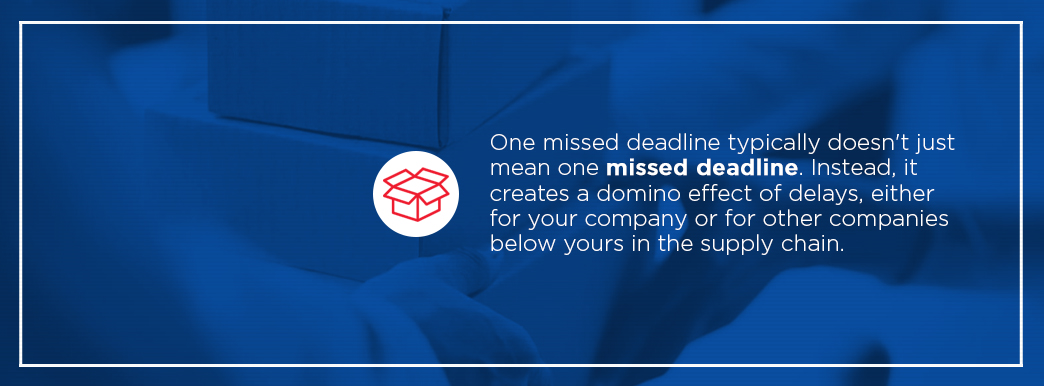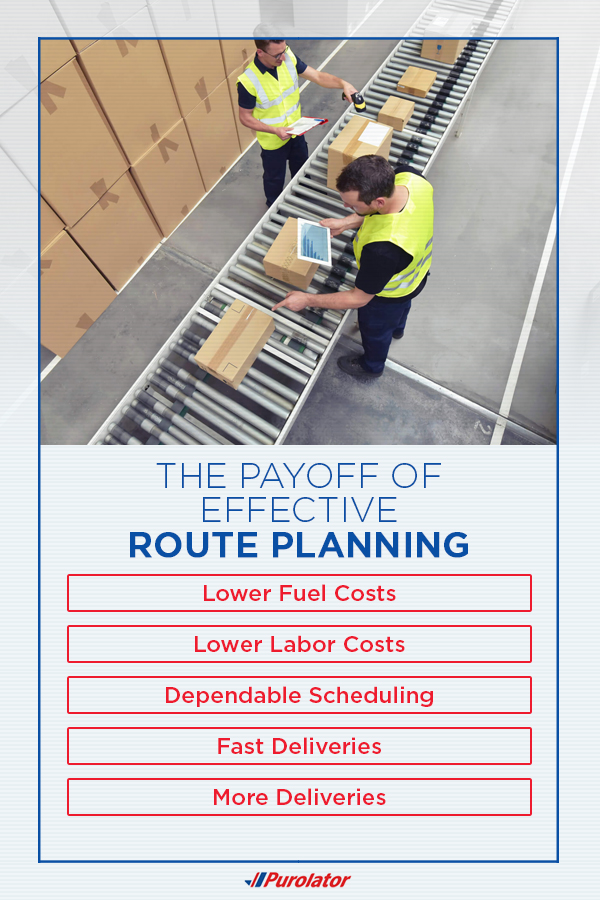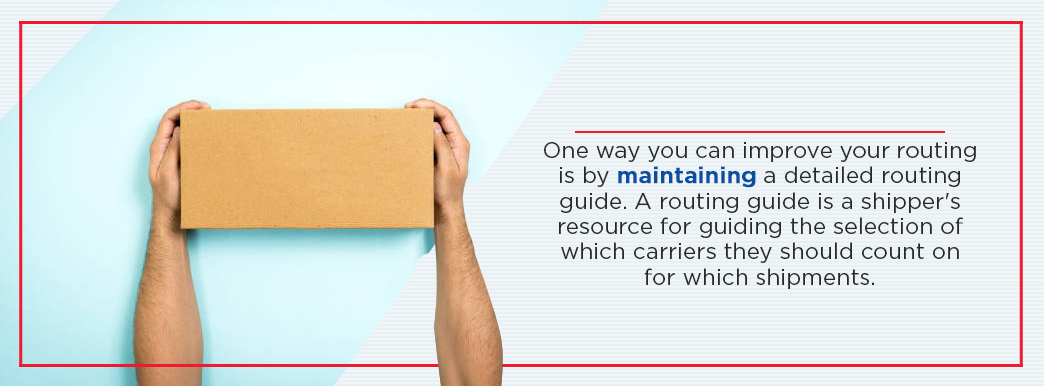Blog
How to Cut Costs in Your Supply Chain With Effective Routing
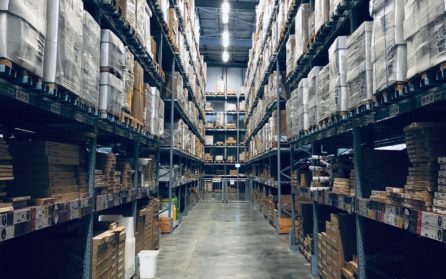
Efficiency is the ultimate goal for businesses. Efficient business practices allow you to maintain strong profit margins while still offering customers a price point they can afford. While you’re looking for ways to improve your business’s efficiency, don’t overlook routing.
Logistics can be an area where businesses often experience waste — wasted time, wasted fuel, wasted space and more. The idea behind route planning, or routing, is to maximize the efficiency of delivery routes in order to enhance the entire supply chain. Route optimization focuses on finding the most cost-efficient route for every delivery scenario.
Supply chain routing problems can lead to many unnecessary costs and can damage relationships with customers and business partners. When you invest time, technology and effort into effective route planning, you can expect a positive return on that investment. Improvements in routing have been shown to save businesses significant amounts of money and help them establish more positive reputations.
Take a close look at the costs of ineffective route planning and the benefits that can come with effective routing. It’s also a good idea to examine best practices for today’s logistics landscape that you can use to improve your routing. And reexamine your supply chain routing regularly – just because you have the most efficient routing today does NOT mean it will be the most efficient in the future. Everything from changing customer delivery profile to a change in product inventory can have an impact that costs real dollars.
The Cost of Ineffective Route Planning
To understand how critical the issue of routing is, let’s first look at some of the costs of ineffective route planning. When your carrier’s route is inefficient, you stand to waste fuel and time, and can might miss deadlines. Here are some of the costs of inefficient route planning
1. Fuel Costs
Inefficient routes can waste fuel. Every extra mile in your route means more fuel used. To reduce fuel use, it’s critical to design carrier routes that get drivers to each destination and back to their point of origin in the fewest number of miles necessary.
Wasted fuel isn’t only tied to wasted miles. Idling engines also contribute to added fuel costs. Some route optimization strategies aim to prevent excessive idling by avoiding routes where a driver would be forced to stop. UPS delivery routes are designed in a way that does not include left turns, which has helped them avoid idling while waiting for an opportunity to turn at intersections.
2. Environmental Impact
Wasting fuel doesn’t just cost you at the pump. It can also affect your reputation when it comes to environmental sustainability. Research overwhelmingly shows that global consumers care about a corporation’s attitudes and actions concerning the environment. With more and more focus on reducing the consumption of fuel, a company that flippantly wastes it is likely to make a poor impression.
On the other hand, a company that is clearly committed to efficient routing and minimizing fuel consumption can gain credibility with consumers or other businesses in the supply chain for their commitment to environmental sustainability.
3. Cost of Labor
Beyond the cost and environmental implications of wasting fuel, there’s also the cost of labor to consider. The phrase “time is money” applies here. The more time a driver spends on the road, the more money your company ends up spending. An inefficient route is often an expensive one.
If a single driver ends up on a poorly planned route that takes extra time, you could even end up having to pay overtime for every hour beyond the standard workweek. Even if you have the means to change out drivers, an inefficient route still means more hours, and a higher cost of labor to make your deliveries.
4. Dissatisfied Customers
An ineffective route can also mean customers have to wait longer to receive their shipments, an especially significant concern in the case of last-mile delivery. Consumer’s expectations for speedy deliveries are becoming increasingly demanding. Gone are the days when customers were happy to receive their orders a week after placing them.
Many people expect to receive packages within two days, if not the same day as their order. Whenever customers are told to expect their shipments, you can assume that most customers will be upset if they receive their packages after the delivery window. Some customers would never order from a retailer again if their order showed up late. To stick to tight delivery schedules, you can’t afford to have an inefficient route.
5. Domino Effect
One missed deadline typically doesn’t just mean one missed deadline. Instead, it creates a domino effect of delays, either for your company or for other companies below yours in the supply chain. For example, if you’re a supplier to a manufacturer who receives your shipment late, this could mean a delayed production schedule for their company, which leads to delays for their distributor, which leads to delays for the retailer and so on.
No matter where you are in the supply chain, a delayed delivery schedule is never a good thing. It can hurt your relationship with other businesses and with customers. When a poorly planned route causes you to miss deadlines, you can expect to see a negative ripple effect.
The Payoff of Effective Route Planning
Just as there is much to be lost through ineffective routing, there is much to be gained through effective routing. A well-designed, efficient route can help your company in a number of ways. It can result in lower costs for fuel and labor and can make your deliveries faster and more dependable. It can also help you make more deliveries in the same time frame. Let’s take a closer look at the payoff you can expect with effective route planning:
1. Lower Fuel Costs
When you find ways to reduce the number of miles or idle time along a route, you can substantially save on fuel costs. Reducing fuel use can be one of the biggest cost savings of supply chain routing. When you consider the fact that delivery trucks have an average fuel economy of 6.64 MPG, shaving just a dozen miles off of a route will save you nearly two gallons of fuel.
You can also save fuel by avoiding traffic situations that will leave the engine idling. Lower fuel costs are a benefit you can be sure you’ll see with route optimization, and these savings can add up over time to make a real difference in your bottom line.
2. Lower Labor Costs
Delivery truck drivers earn a median hourly wage of $14.66. That means, not counting the cost of fuel or anything else, every additional hour in a given route could cost your company an additional $14.66. If it involves overtime, you can expect it to cost even more.
When you eliminate hours from a route, you also lower your labor costs. An eight-hour route that would have previously cost approximately $117 for a single driver would cost $7.33 less if it was completed in seven and a half hours. Imagine how these transportation routing savings would stack up over time. Shaving even just a half-hour off of a route will save you hundreds of dollars in a relatively short period. If you reduce all of your company’s routes by 30 minutes, you’ll quickly see thousands of dollars in savings.
3. Dependable Scheduling
Optimizing your routes isn’t just about finding the shortest distance between points. It’s also about analyzing traffic patterns to avoid running into problems that can throw off your schedule. Even if a certain route appears to be optimal, if it includes driving through a busy shopping district the holiday season, it could very well result in schedule delays.
With more careful route planning, you can avoid these mishaps and stick to a very tight and dependable schedule. When you consistently make deliveries on time or even early, you’ll develop great credibility with your customers and will experience smoother operations all-around. Imagine your deliveries sticking to a best-case-scenario schedule most of the time instead of running into frequent delays. Not every delay can be predicted, but many of them can be when you put the effort into optimizing your routes.
4. Fast Deliveries
With more efficient routes, you may be able to move beyond just sticking to your current schedule more reliably to developing a new schedule with faster delivery times. Speed tends to be a major priority for today’s consumers, and that priority is passed on to companies at all levels of the supply chain.
When your company becomes known for fast delivery times, you have a significant competitive advantage. Consumers are more likely to purchase from a retailer repeatedly if they enjoy a positive delivery experience. Customers may even be willing to pay more for a product if they can expect to receive it sooner. Once an order has been placed, it’s up to the carrier to deliver with the speed customers expect.
5. More Deliveries
Increased efficiency translates to increased productivity. When you’re able to reach the same number of destinations in less time, this means you can start to take on more and accomplish it all without being spread too thin. In the case of logistics, this means making more deliveries in a day than you were making before.
The implications of this are far-reaching. You can begin to scale your business more confidently when you gain the capacity to do more without spending more on labor and fuel. If you want to grow your business, before taking on added costs, see where you can use your current resources more efficiently.
Supply Chain Routing Best Practices
Take a look at some best practices you can implement to optimize supply chain routing. We’re going to focus on five strategies that can help you plan routes more effectively.
The strategies include maintaining an up-to-date and detailed routing guide, using cutting-edge software, bypassing distribution centers, maximizing delivery vehicles’ capacity and partnering with a carrier who knows the area. Let’s take a more detailed look at each of these best practices.
1. Maintain a Detailed Routing Guide
One way you can improve your routing is by maintaining a detailed routing guide. A routing guide is a shipper’s resource for guiding the selection of which carriers they should count on for which shipments. Your company should make these determinations based on a clearly defined logistics strategy and a thorough understanding of what unique strengths each carrier has to offer. When you choose your carriers wisely, you can enjoy the benefits of more optimal routes.
A routing guide can be as simple as a paper document, but many companies are switching to online guides. Whether you use paper or an online platform for your guide, be sure to keep it updated regularly so that it always reflects the best possible methods within the current market and for your business’ needs at the moment.
2. Use Route Optimization Software
In the past, routes were planned using physical maps and insider knowledge about the best way to get from one point to another. Today, technology has provided a more precise way of panning efficient routes. Route optimization software has become a valuable asset to the logistics industry. The software goes beyond your typical online navigation systems. It uses advanced algorithms to determine the most efficient routes, not just for one delivery truck but for an entire fleet.
There are multiple factors to consider when choosing the right route optimization software for your business. Look for software that factors in:
- Real-time traffic updates
- Order-vehicle constraints
- Accurate geocoding
- Data from past trips
- Consideration of drivers’ current preferences
- Educational resources to help with change
- Real-time tracking and analytics
- Dynamic route planning
3. Bypass Distribution Centers When Possible
Another strategy some companies are employing to shave off unnecessary time and miles from their routes is a distribution center (DC) bypass. In the past, it was standard to ship goods to distribution centers where they would then continue on to their final destinations. Doing so often meant, and still means, freight is traveling well out of its way for the sake of stopping at a distribution center. The model can still work, especially if you operate within a relatively small geographical area or have distribution centers positioned frequently.
However, many companies can improve their routing by leaving the distribution center behind in favor of a more direct approach. You can achieve benefits such as shorter transit times, lower costs and better inventory through a DC bypass approach. Keep in mind that some logistics providers won’t have the capacity to provide direct-to-end-user service. If you want to use a DC bypass strategy, you’ll need to find a carrier who offers the service and can help you achieve a more optimal route.
4. Maximize the Vehicle’s Capacity
You can cash in on supply chain routing savings by maximizing delivery vehicles’ capacity. Every vehicle comes with a maximum load capacity, but how often does your shipment come close to it? Empty space in a delivery truck is a wasted opportunity. The most efficient delivery route will maximize the space in the truck so that you’re not spending the same number of miles on a smaller volume delivery that you could be spending on a higher volume delivery. Take the time to work with your transportation partner to insure trucks are packed in such a way to optimize efficiency as well as allow for streamlined unpacking.
If time were not a factor, you could just wait until a truck fills up to send it on its way. Of course, to meet deadlines, you will sometimes have to initiate a route with empty space still available in the truck. Working with a carrier who has different sized vehicles can be helpful here. In some instances, a smaller delivery vehicle may be more appropriately sized for a shipment and may also have better fuel economy because of its smaller size.
5. Use a Carrier with Experience in the Region
You’ll want to work with a carrier who has first-hand experience delivering in the area. There are many benefits to this strategy, but when it comes to route optimization specifically, it pays to have a carrier service that has local knowledge. Whether it’s knowing where deteriorating infrastructure can cause delays or knowing a shortcut to get around an accident, regionally experienced drivers bring a lot to the table.
Regional knowledge is especially important if you’re shipping internationally. Some American companies who try to expand into Canada, for example, realize they don’t understand the logistics involved with sending shipments to the neighboring country. Not having the documentation and labeling you need to send shipments across the border can significantly delay your deliveries. For efficient deliveries, count on carriers who understand what’s involved and who know the area.
6. Consolidate Different Shipment Types for Optimal Efficiency
Combining small package courier shipments with your LTL may take some coordinating on the front end, but can help you save on transit times as well as transportation costs.
Partner With Purolator International to Improve Your Routing
Partnering with the right logistics provider is key if you want to achieve the highest possible level of efficiency. Purolator International is a supply chain logistics solutions provider with a commitment to leading the way in shipping efficiency. We work with our clients to develop customized solutions. You can count on routing that’s strategically designed for you rather than forced into an existing network.
We specialize in forwarding express, freight and parcel shipments, both via ground and air, as well as fulfillment and delivery services throughout North America. We have expert knowledge of shipping to Canada from the U.S. and even offer customs brokerage, so you can count on Purolator International to get your shipments across the border efficiently every time.
Our transportation providers are all exceptional in their field and know how to execute your strategies for efficiency. We’re known for our fast transit times and dependable scheduling and have received industry awards for our commitment to offering quality logistics services.
When you’ve invested so much into your product, and found ways to implement more efficient business practices at every turn, why allow inefficient routing to eat int your profits? For a logistics partner who shares your commitment to efficiency, choose Purolator International. We have the innovative supply chain solutions and modern technology needed to help your business succeed. Contact us today to learn more about how we can help you achieve better efficiency, as well as many other benefits that come with a strong logistics partnership.
